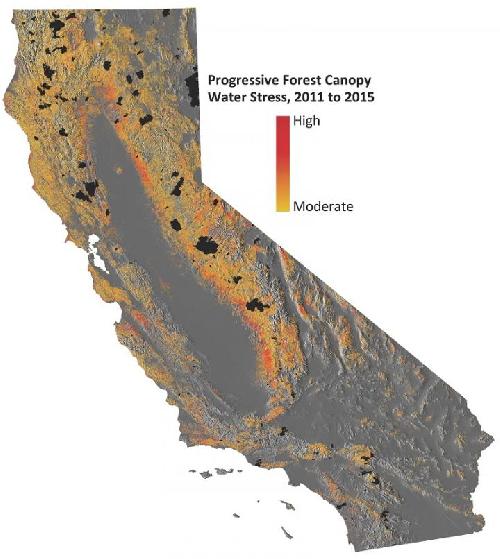Millions of trees are in peril from the drought in California but that is not the fault of climate change or even bad luck - every 20 years California has a drought as bad as what just ended. It is instead bad policy; California's water infrastructure has not been improved in a meaningful way since the 1960s and since then environmental policy has been dictated by lobbyists for activist groups, so the state can't build new reservoirs, to store water for when droughts happen, and they are forced to dump fresh water into the Pacific Ocean.
The trees aren't just in peril from politicians and environmentalists, there is also the ever-present wildfires and the destructive bark beetle.
Carnegie's Greg Asner
and colleagues used the laser-guided imaging spectroscopy tools mounted on the Carnegie Airborne Observatory (CAO) and combined the CAO data with more-traditional satellite data going back to 2011.

They affirmed what everyone knew; a progressive loss of water in California's forest canopies over the four-year span. Mapping changes in canopy water content tells scientists when trees are under drought stress and greatly aids in predicting which trees are at greatest death and fire risk.
About 41,000 square miles (10.6 million hectares) of forest containing up to 888 million large trees experienced measurable losses of canopy water between 2011 and 2015. Of this group, up to 58 million large trees reached water loss thresholds that the scientists deemed extremely threatening to long-term forest health. Given the severity of the situation, even with increased precipitation due to El Nino, if drought conditions reoccur in the near future, the team predicts that there would be substantial changes to already significantly weakened forest structures and systems.





Comments